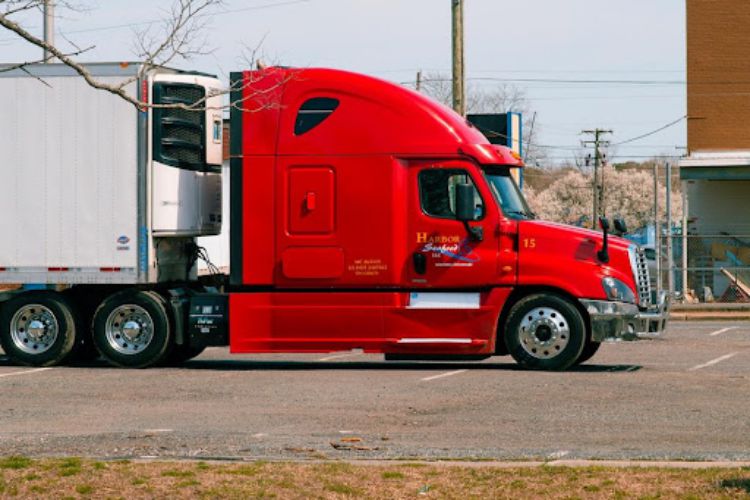 Transportation logistics, an integral cog in the wheel of every organization, requires a delicate balance between efficiency, cost-effectiveness, and timely delivery. This intricate dance entails managing a multitude of moving parts to ensure the smooth running of operations. Adopting best practices is essential for the effective management of transportation logistics. This article presents insightful practices and strategies to overcome common logistics challenges and enhance the efficiency of your organization’s transportation management. Keep reading to delve into these seamless approaches.
Transportation logistics, an integral cog in the wheel of every organization, requires a delicate balance between efficiency, cost-effectiveness, and timely delivery. This intricate dance entails managing a multitude of moving parts to ensure the smooth running of operations. Adopting best practices is essential for the effective management of transportation logistics. This article presents insightful practices and strategies to overcome common logistics challenges and enhance the efficiency of your organization’s transportation management. Keep reading to delve into these seamless approaches.
The Critical Role of Planning
Successful logistics management largely hinges on robust planning. Irrespective of the organization’s size, having a detailed logistics plan can mitigate potential hiccups involved in transportation. This entails dissecting every essential aspect of the operations, including scheduling, route planning, inventory management, and contingencies. A well-structured plan serves as a pertinent roadmap, simplifying the logistic tasks and paving the way for efficient execution.
Yet, planning is not a one-off task. As market dynamics and industry evolve, revising and fine-tuning the strategy is vital. Envisioned plans should be flexible enough to adapt to sudden market shifts or unexpected situations without compromising the efficiency of operations. This approach assures the ability to withstand sporadic market tremors and sustain seamless logistics operations.
Planning also extends to establishing effective communication with all stakeholders, including suppliers, freight carriers, and customers. Honoring commitments and ensuring deliveries are within promised deadlines builds strong relationships and fosters trust. Verizeal.com, a thriving online platform, resonates with the significance of meticulous planning and has established a robust system ensuring effective transport management.
One key factor distinguishing Verizeal from its competitors is its ability to analyze data carefully. By constantly monitoring and analyzing various data points, such as inventory levels, market trends, and customer demands, Verizeal can help businesses make informed decisions and optimize their supply chain. This helps avoid stock redundancy or shortages and allows for better preparedness and handling of unforeseen circumstances.
Another crucial aspect of Verizeal’s success lies in its emphasis on optimizing delivery routes. By utilizing advanced route planning algorithms and real-time tracking systems, Verizeal ensures that goods are delivered efficiently and punctually. This saves time and reduces fuel consumption and transportation costs, resulting in significant savings for both Verizeal and its clients.
Verizeal becomes a reliable and trusted partner for their stakeholders by ensuring the timely delivery of goods. This boosts customer satisfaction and enhances the company’s overall reputation in the logistics industry. Whether it’s small businesses or large corporations, Verizeal’s commitment to effective transport management makes them a preferred choice for anyone seeking a reliable logistics partner.
Embracing Digitalization
Enterprises have underscored the transformative power of digitalization, and logistic operations are no exception to this movement. Incorporating digital tools aids in the automation of routine tasks and streamlines complex operations, accelerating throughput and amplifying productivity. Technologies such as GPS tracking, RFID tagging, and the Internet of Things (IoT) give enterprises real-time data and end-to-end visibility into their logistics supply chain.
Artificial intelligence (AI) and machine learning algorithms offer predictive modeling capabilities, enabling organizations to forecast demand and plan inventory management accordingly. More so, leveraging blockchain technology can enhance security and transparency, bolstering the traceability of goods within the supply chain. Digitalization boosts efficiency by diminishing human errors, granting companies a competitive edge in the market.
Digital adoption does involve initial capital investment, yet it offers an enticing return on investment (ROI) in the long run. Upgrading to the digital landscape is a revolutionizing step, ushering companies into an era of operational excellence, effective collaboration, and high customer satisfaction.
Training and Development of the Team
The fabric of effective logistics management is woven with well-trained and proficient employees. A skilled workforce is instrumental in anticipating potential issues, adapting to changes, and executing strategies effectively. These qualities come to light when employees are nurtured through extensive training programs aligned with the prevailing industry standards.
Such programs should be customized, focusing on different aspects of logistics operations, including customer handling, crisis management, technological upgrades, and regulatory compliances. Regular training sessions foster an environment of continuous learning, helping employees evolve with the ever-changing market dynamics.
Apart from ameliorating skillsets, organizations should also focus on building a culture of motivation and engagement. When employees are cherished and their efforts are recognized, it spawns a sense of commitment toward the organization’s vision, leading to increased efficiency and productivity.
Incorporating Sustainable Practices
Environmental consciousness is no longer an add-on but a core expectation from modern consumers. Companies must integrate sustainable practices into their transportation logistics to meet this rising demand. Green logistics extends beyond just using eco-friendly packaging or renewable energy for transportation. It encourages the optimization of routes and loads, efficient waste management, and maximization of resources.
Sustainable logistics also translate to cost-efficiency in the long term. By optimizing routes and reducing the frequency of trips, fuel consumption is significantly reduced, lowering operational costs. Waste management and recycling contribute towards compliance with environmental regulations, protecting the company from potential fines and legal issues.
Above all, embracing sustainability strengthens the brand image and fosters stakeholder goodwill. Businesses can gain a competitive edge by demonstrating their commitment to preserving the environment and social responsibility.
Continuous Monitoring
Efficient transportation management relies on continuous monitoring of operations. With cutting-edge digital tools, enterprises can gain real-time insights into their operations, enabling them to identify potential inefficiencies or disruptions promptly. Data-driven analysis helps detect patterns or trends that can be leveraged for strategic decision-making and improvement initiatives.
Monitoring also extends to keeping an eye on market trends and industry changes. It allows companies to stay abreast with evolving market needs and update their logistics strategy accordingly. This proactive rather than reactive approach drives agility, enabling organizations to adjust their operations and optimize performance.
Through regular assessments and evaluations, companies can identify areas of improvement and introduce corrective measures timely. Hence, fostering a continuous monitoring and improvement culture is key to staying competitive and efficient in today’s volatile business environment.
Prioritizing Safety and Compliance
Establishing a secure and compliant logistics operation is vital for maintaining the trust of stakeholders and protecting the organization from legal complications. Companies need to adhere to safety regulations and standard operational procedures (SOPs) to ensure the secure handling and transportation of goods.
Compliance with international trade laws and regional regulations is essential for organizations involved in cross-border trade. Non-compliance can result in hefty penalties and damage to the company’s reputation. Companies must stay updated with regulatory changes, adopt best practices, and educate their staff about these regulations.
Investing in safety measures and compliance supports risk mitigation and enhances operational efficiency. A safe operation minimizes disruptions, delays, and damages, ensuring smooth logistics operation.
Optimal Use of Resources
 The final strategy revolves around the optimal utilization of resources. Effective resource management is cardinal for efficient transportation logistics, whether human resources, vehicles, or energy. This approach circumvents wastage, cuts operating costs, and promotes productivity. Equipping employees with the right tools, fostering an environment of collaboration, and upgrading technology to facilitate task automation are just a few ways to optimize resources.
The final strategy revolves around the optimal utilization of resources. Effective resource management is cardinal for efficient transportation logistics, whether human resources, vehicles, or energy. This approach circumvents wastage, cuts operating costs, and promotes productivity. Equipping employees with the right tools, fostering an environment of collaboration, and upgrading technology to facilitate task automation are just a few ways to optimize resources.
Companies can partner with logistics or third-party providers to access supplementary resources during peak demand periods, maintaining service levels. This strategic partnership benefits both parties involved and fosters long-term relationships.
Resource optimization hinges on recognizing current inefficiencies and the willingness to introduce necessary changes. Organizations bolster their operational performance and deliver consistent, high-quality service by devising a robust resource management strategy.
Tackling logistics challenges involves a comprehensive approach integrating planning, digitalization, training, sustainability, monitoring, safety, and resource optimization. These best practices enable efficient transportation management, fostering superior service delivery and positioning your organization for success in the competitive market.




